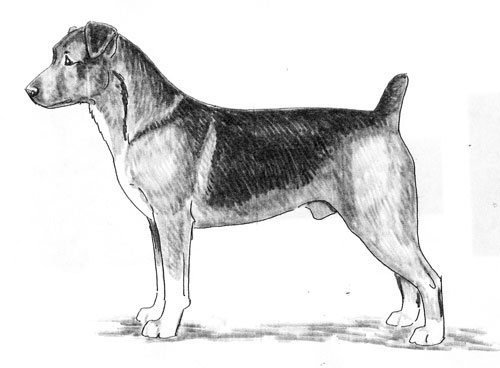Austrian Pinscher
Terrier Group
The goals and purposes of this breed standard include: to furnish guidelines for breeders who wish to maintain the quality of their breed and to improve it; to advance this breed to a state of similarity throughout the world; and to act as a guide for judges.
Breeders and judges have the responsibility to avoid any conditions or exaggerations that are detrimental to the health, welfare, essence and soundness of this breed, and must take the responsibility to see that these are not perpetuated.
Any departure from the following should be considered a fault, and the seriousness with which the fault should be regarded should be in exact proportion to its degree and its effect upon the health and welfare of the dog and on the dog’s ability to perform its traditional work.
History
The Austrian Pinscher descends from the ancient Austrian country pinschers that were still widespread in the second half of the 19th century and used as versatile farm dogs. Pure breeding of this breed began in 1921.
The Austrian Pinscher was recognized by the United Kennel Club in 2006.
General Appearance
A stocky, short coated dog of medium size, with a bright expression.
Characteristics
Assertive, lively and alert, the breed is devoted to people it is familiar with and suspicious of strangers, making it a useful guard dog.
Head
The head is pear shaped.
SKULL
The skull is broad and rounded, with a pronounced frontal furrow and groove. The zygomatic arches are distinctly developed, and the stop is well marked.
MUZZLE
The muzzle is slightly shorter than the skull, strong, with a straight nasal bridge. The lips are tight and smooth, with dark pigmentation.
TEETH
The Austrian Pinscher has a complete set of evenly spaced, white teeth meeting in a scissors bite.
Disqualification: Undershot or overshot bite.
NOSE
The nose is black.
EYES
Large and round, with close fitting, dark rims.
EARS
Button ears are small and high set.
Neck
Medium length, and strong.
Forequarters
The shoulder blades and upper arms are long and well laid back.
FORELEGS
The legs are straight and well muscled, with strong bone and slightly sloping pasterns.
Body
In proportion, the body is slightly longer than tall. The chest is long, deep, broad and barrel shaped, with a well developed forechest. The withers are well defined, and the back is short, broad and straight. The loin is short and broad, and the croup is long and broad. The belly is slightly tucked up.
Hindquarters
The hindquarters are well angulated.
HIND LEGS
The upper thighs are broad. The hocks are strong, and the rear pasterns are short.
Feet
The feet are close knit, with strong nails.
Tail
Medium length, high set, strong, and densely covered with hair.
Coat
The coat is thick and double. The outer coat is short to medium-long, thick and close lying. The undercoat is thick and short. The buttocks are slightly furnished with trousers.
Color
Russet gold, brownish yellow, stag red, or black. with tan markings. White markings are allowed on the chest, muzzle, neck, throat, nape, feet and tip of tail. Lack of white markings is not a fault.
Height
Height at the withers is 16.5 to 19.5 inches.
Gait
Flowing, harmonious, and ground covering.
Disqualifications
(A dog with a Disqualification must not be considered for placement in a conformation event, and must be reported to UKC.)
Unilateral or bilateral cryptorchid.
Viciousness or extreme shyness.
Albinism.
Undershot or overshot bite.

Looking for a Dog?
Find a dog that will fit your family.
Note: The breeders on this list are not endorsed by UKC.
©Copyright 2006, United Kennel Club
